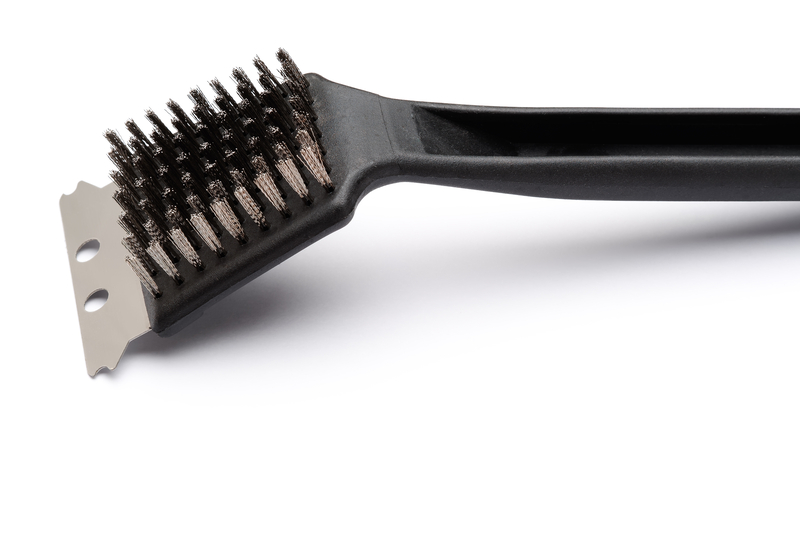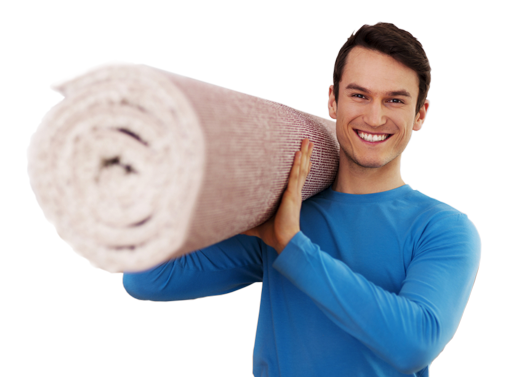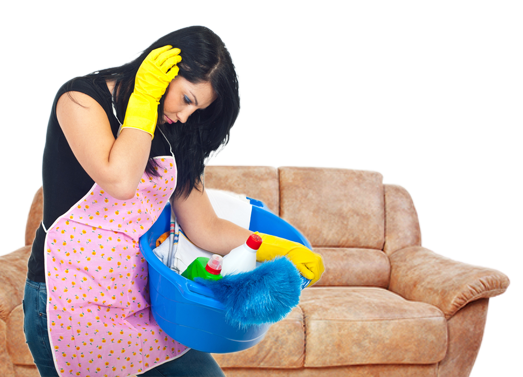Achieve Spotless Floors with These Tools
Posted on 12/09/2025
Achieve Spotless Floors with These Tools: The Ultimate Guide
Spotless, gleaming floors aren't just visually appealing--they create a healthy, comfortable living environment and reflect positively on any household or workplace. However, achieving spotless floors isn't just about effort; it's about using the right cleaning tools and techniques suited to your specific floor type. This comprehensive article covers everything you need to know to achieve perfectly clean floors. From robust vacuum cleaners, effective mops, and specialized floor cleaners to expert maintenance strategies, you'll find detailed information to help you maintain pristine floors effortlessly.
Why Spotless Floors Matter: More Than Just Aesthetics
Clean floors are often associated with tidiness and attention to detail, but the significance goes beyond appearance. Dirty floors can harbor dust mites, allergens, bacteria, and even mold, contributing to health issues and unpleasant odors. Spotless floors, on the other hand, promote a cleaner, more hygienic environment for you, your family, or employees. Furthermore, regular floor maintenance extends the lifespan of your flooring materials, saving you money on repairs or replacements in the long term.
Top Benefits of Having Spotless Floors
- Boosts indoor air quality by reducing dust and allergens.
- Prevents slips and falls due to buildup of grime or spills.
- Preserves floor finish and prevents damage over time.
- Creates a welcoming atmosphere for guests and occupants.
- Supports a sense of well-being and order in your space.
Understanding Your Floor Type
Knowing your floor type is the first step towards achieving and maintaining spotless flooring. Different materials require specific care routines. Here's an overview of the most common floor types and considerations for each:
- Hardwood floors - Susceptible to moisture and scratches; need gentle cleaning.
- Tile floors (ceramic, porcelain) - Grout needs special attention; resistant to water but can stain.
- Laminate flooring - Water-resistant but not waterproof; avoid excessive moisture.
- Vinyl floors - Durable and easy to clean; avoid harsh chemicals.
- Carpeted floors - Attract dust and allergens; require regular vacuuming and periodic deep cleaning.
- Stone floors (marble, granite, slate) - Prone to etching and staining; need pH-neutral cleaners.
Why does your floor type matter?
Certain tools or cleaning solutions can damage specific flooring. For example, excessive water can warp hardwood, while acidic cleaners may erode stone surfaces. Always select tools and products based on your flooring type to avoid costly mistakes.
Best Tools for Achieving Spotless Floors
To achieve spotless floors, invest in tools that suit your needs and floor materials. Below you'll find the essential devices and supplies categorized by use and floor compatibility.
1. Vacuum Cleaners
Modern vacuum cleaners are crucial for removing dust, dirt, and allergens from all types of floors. Spotless floors begin with regular vacuuming to prevent debris from scratching surfaces or becoming embedded in carpets.
- Upright vacuums: Ideal for large carpeted areas; feature powerful suction and brush rolls.
- Canister vacuums: Versatile; suitable for hard floors and above-floor cleaning (stairs, upholstery).
- Stick vacuums: Lightweight; good for quick pickups and smaller spaces.
- Robot vacuums: Offer convenient, daily maintenance with automated cleaning schedules.
- Handheld vacuums: Perfect for spot cleaning and hard-to-reach areas.
Tip: For homes with both hard and carpeted floors, select a vacuum with variable suction and interchangeable brush heads.
2. Microfiber Mops and Cloths
Microfiber technology has revolutionized cleaning by attracting dust, dirt, and even bacteria with minimal effort. They're gentle on surfaces and effective at collecting particles without needing excessive water or chemicals.
- Flat microfiber mops: Excellent for everyday floor cleaning, especially hardwood, laminate, and vinyl.
- Spin mops: Great for wet mopping; wring out excess water for safe use on sensitive floors.
- Microfiber cloths: Versatile; ideal for spot cleaning, detailing, and buffing.
Investing in quality microfiber guarantees optimum results and can help you achieve that flawless, streak-free shine.
3. Steam Mops
A steam mop uses the natural power of hot steam to disinfect floors and dissolve sticky messes. It's especially useful for tile, vinyl, or sealed hardwood--but always check your floor's compatibility with steam cleaning.
- Advantages: Kills bacteria without chemicals, dries quickly, and eliminates tough grime.
- Best for: Kitchens, bathrooms, and high-traffic areas that require thorough sanitization.
Note: Never use on unsealed hardwood or delicate natural stone floors.
4. Floor Scrubbers and Polishers
For deep cleaning or preparing floors for refinishing, a powered floor scrubber or polisher can be invaluable. These tools agitate built-up dirt and restore a glossy finish.
- Rotary scrubbers: For extensive grime and large commercial spaces.
- Buffer machines: For polished stone or vinyl flooring, adding shine and removing scuffs.
*Reserve these powerful tools for periodic use or when tackling stubborn stains and scuffs.
5. Brooms and Dustpans
An old classic, high-quality brooms and dustpans are perfect for everyday sweeping of dry debris. Choose soft-bristle brooms for indoor surfaces and angle brooms for corners and tight spaces.
- Rubber brooms: Great for pet hair on hard floors.
- Push brooms: Well-suited for garages, basements, and patios.
6. Specialized Floor Cleaners and Solutions
A crucial part of achieving spotless floors is using the right cleaning products. Always select solutions designed for your floor type to ensure safe, effective cleaning.
- Neutral pH cleaners: Safe for wood, stone, and tile.
- Grout cleaners: Designed for tile floors to remove stubborn stains from grout lines.
- Enzymatic cleaners: Break down organic spills (like pet accidents) on carpets and rugs.
- Polish/restorer: Adds shine and protection to vinyl or sealed stone floors.
Always avoid bleach or harsh chemicals unless recommended for your specific flooring material.

Expert Cleaning Tips to Achieve Sparkling Floors
Using the right tools is half the battle; effective techniques ensure your floors truly look and feel clean. Here are professional tips to get spotless, gleaming floors every time:
Daily Maintenance
- Remove shoes at the door to prevent bringing outdoor dirt inside.
- Use entryway mats to trap debris before it reaches floors.
- Sweep or vacuum high-traffic areas every day to stop grit from scratching the surface.
- Wipe up spills immediately to avoid stains or water damage.
Weekly and Periodic Cleaning Routines
- Vacuums and mops: Use once or twice a week, depending on foot traffic.
- Deep clean carpets and rugs: Every 3-6 months with a carpet cleaner or professional service.
- Polish floors: Buff stone, tile, or vinyl floors monthly to maintain a glossy finish.
Pro Tricks for Hard-to-Clean Areas
- Baseboards: Wipe with a damp microfiber cloth.
- Grout lines: Use a small scrub brush and specialty cleaner for deep stains.
- Under furniture and appliances: Use vacuum attachments or extendable dusters for hard-to-reach spots.
Matching Cleaning Tools to Floor Types: What to Use and What to Avoid
| Floor Type | Recommended Tools | Best Practices | What to Avoid |
|---|---|---|---|
| Hardwood | Microfiber mop, vacuum (soft brush), damp mop | Use minimal water, clean spills quickly | Saturated mops, steam mops, abrasive brushes |
| Tile | Steam mop, scrubbing brush, tile cleaner | Scrub grout regularly, use pH-neutral cleaners | Bleach-based products (may damage grout or tiles) |
| Laminate | Microfiber mop, vacuum, lightly damp mop | Minimize moisture, clean with gentle cleaner | Standing water, wax or polish products |
| Vinyl | Broom, mop, vacuum, vinyl floor cleaner | Wipe spills promptly, avoid heavy abrasives | Harsh solvents, steam mops (for some types) |
| Carpet | Vacuum, carpet shampooer, stain remover | Vacuum often, deep clean regularly | Excess moisture, non-carpet spot removers |
| Stone | pH-neutral cleaner, microfiber mop, soft broom | Seal regularly, use minimal water | Acidic cleaners (lemon, vinegar), abrasive pads |
Eco-Friendly Options for Spotless Floors
Environmentally safe cleaning options benefit your household and the planet. Here's how to incorporate eco-friendly methods into your floor cleaning routine:
- Reusable microfiber mops and cloths: Eliminate disposable waste.
- Natural cleaners: Use diluted vinegar (for tile/vinyl), baking soda for scrubbing, or castile soap.
- HEPA filter vacuums: Trap fine particles and allergens without releasing them into the air.
- Minimal water usage: Adopting damp-mopping and spot cleaning reduces water waste.
Innovation Spotlight: Smart Floor Cleaning Technology
Recent advancements in cleaning technology make it easier than ever to achieve pristine floors with minimal effort:
- Robotic vacuums and mops: Schedule cleaning from your smartphone, with mapping and dirt detection.
- Self-cleaning mop systems: Automate wringing, rinsing, and even drying the mop head between uses.
- Wireless rechargeable sweepers: Quick, quiet cleaning without the noise or hassle of cords.
- Eco-sensor detergents: Deliver the right amount of cleaner for every job, reducing waste.
Integrating smart devices into your routine can ensure consistently spotless flooring, especially in busy households or large office spaces.
Long-Term Floor Maintenance: Keeping It Spotless
Regular maintenance is key to sustaining the appearance and cleanliness of your floors. Here's a simple routine to help keep every floor in your home or office spotless and spectacular year-round:
- Assess daily traffic patterns and focus on cleaning high-traffic areas more frequently.
- Stick to a consistent schedule for sweeping, vacuuming, and wet mopping.
- Rotate furniture and rugs periodically to prevent uneven wear.
- Replace worn-out cleaning tools to maintain their effectiveness.
- Repair minor floor damage (scratches, chips) as soon as you notice them.
Remember: Prevention is the best cure. The less dirt and grime tracked onto your floors, the easier it is to maintain their spotlessness.

Frequently Asked Questions: Achieving Spotless Floors
How often should I clean my floors?
This depends on your lifestyle, pets, and foot traffic. High-traffic areas (like kitchens and hallways) may need daily attention, while less-used spaces can be cleaned weekly. Deep cleaning is suggested every few months.
Are steam mops safe for all floor types?
Not all floors can handle the heat and moisture of a steam mop. Always check manufacturer guidelines for your particular floor before using steam.
How can I prevent streaks on my hard floors?
Use a clean, dry microfiber pad and avoid over-wetting the surface. Using distilled water and the correct cleaner for your floor type also helps minimize streaks.
What's the best way to treat persistent stains?
For carpets, enzymatic cleaners break down organic stains. For hard floors, a paste of baking soda and water can lift many surface marks. Always test a small area first and check for compatibility.
Conclusion: Achieve Spotless Floors--It's All About the Right Tools
Achieving spotless floors doesn't have to be overwhelming. The secret lies in understanding your floor type, investing in high-quality cleaning tools, and adopting effective maintenance habits. With the right vacuum, mop, cleaner, and strategy, every room in your home or office can boast pristine, sparkling floors that impress and inspire.
- Identify your floor types and their specific needs.
- Choose the best cleaning tools--vacuums, mops, scrubbers--that match your flooring.
- Practice regular maintenance and prevention to keep every inch of your floor spotless.
- Embrace eco-friendly products and smart cleaning technologies for added convenience.
Ready to achieve spotless floors? Gather the tools and tips from this guide, and enjoy a cleaner, healthier, and more beautiful home or workplace every day!





